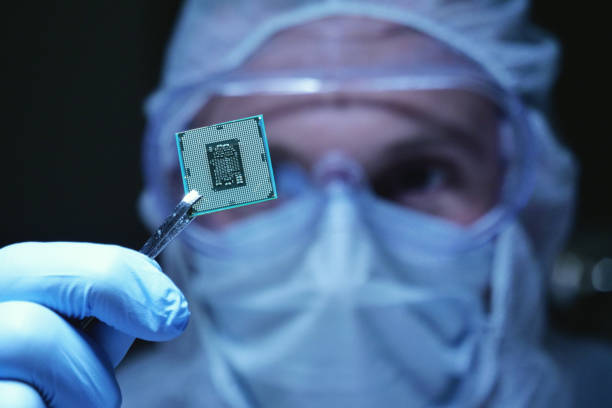| 1. Introduction |
| 2. What is Nanotechnology? |
| 2.1 Definition |
| 2.2 Historical Background |
| 3. Applications of Nanotechnology |
| 3.1 Medicine and Healthcare |
| 3.2 Electronics and Computing |
| 3.3 Energy and Environment |
| 4. Nanomaterials |
| 4.1 Types of Nanomaterials |
| 4.2 Properties of Nanomaterials |
| 5. Nanotechnology in Everyday Life |
| 6. Benefits and Risks of Nanotechnology |
| 6.1 Benefits |
| 6.2 Risks |
| 7. Future Trends in Nanotechnology |
| 8. Conclusion |
| 9. FAQs |
| 9.1 What is the significance of nanotechnology? |
| 9.2 Can nanotechnology be used in renewable energy sources? |
| 9.3 Is nanotechnology safe for human health? |
| 9.4 How can nanotechnology improve drug delivery? |
| 9.5 What are some potential ethical concerns associated with nanotechnology? |
Contents
Nanotechnology: Revolutionizing the World at the Molecular Scale
Nanotechnology, a field at the forefront of scientific advancements, is reshaping various industries by manipulating matter at the nanoscale level. This article explores nanotechnology, its applications, benefits, risks, and future trends. Discover how this remarkable discipline is revolutionizing the world we live in.
1. Introduction
In the vast realm of scientific discovery, nanotechnology stands out as a game-changer. It involves manipulating and controlling matter on a scale ranging from 1 to 100 nanometers, where unique properties and behaviors emerge. By harnessing these properties, scientists and engineers can create innovative solutions across diverse fields, paving the way for groundbreaking technological advancements.
2. What is Nanotechnology?
2.1 Definition
Nanotechnology refers to the study and application of materials and devices at the nanoscale, where dimensions are measured in billionths of a meter. At this scale, materials exhibit unique properties, such as enhanced conductivity, increased strength, and altered reactivity, which can be harnessed for various purposes.
2.2 Historical Background
Although nanotechnology emerged as a formal discipline in the 1980s, its conceptual origins can be traced back to a famous lecture by physicist Richard Feynman in 1959. Feynman discussed the potential for manipulating and controlling individual atoms and molecules, laying the foundation for the field’s development. Since then, nanotechnology has evolved rapidly, leading to significant breakthroughs and applications.
3. Applications of Nanotechnology
Nanotechnology finds applications in various domains, transforming industries and pushing the boundaries of scientific possibilities. Let’s explore some of the critical areas where nanotechnology is making a remarkable impact:
3.1 Medicine and Healthcare
Nanotechnology has revolutionized medicine, introducing new avenues for diagnostics, treatments, and drug delivery systems. Nanoscale particles and devices can precisely target diseased cells, enhancing the effectiveness of treatments while minimizing side effects. Additionally, nanotechnology is vital in biosensors, imaging technologies, and regenerative medicine.
3.2 Electronics and Computing
The electronics industry benefits immensely from nanotechnology, as it allows for the miniaturization of components and the development of more efficient devices. Nanoscale transistors, quantum dots, and nanowires enable faster and more powerful computing, creating smaller, more intelligent devices like smartphones, tablets, and wearable technology. Nanotechnology also enhances electronic devices’ performance and energy efficiency, making them more sustainable and environmentally friendly.
3.3 Energy and Environment
Nanotechnology plays a crucial role in addressing global energy and environmental challenges. By leveraging nanomaterials and nanodevices, scientists can develop highly efficient solar cells, advanced energy storage systems, and lightweight and durable materials for energy conservation. Additionally, nanotechnology offers water purification, pollution detection, and environmental monitoring solutions, contributing to a greener and more sustainable future.
The Dark Side of Data Privacy: How Internet Privacy is Under Attack
4. Nanomaterials
Nanotechnology relies on creating and utilizing nanomaterials, which exhibit unique properties due to their nanoscale dimensions. Let’s explore the types and properties of nanomaterials:
4.1 Types of Nanomaterials
Nanomaterials can be classified into various categories, including nanoparticles, nanotubes, nanocomposites, and nanofibers. Each type has distinct characteristics and applications. For example, nanoparticles are widely used in medicine, electronics, and catalysis, while nanotubes find applications in reinforced materials and nanoelectronics.
4.2 Properties of Nanomaterials
The properties of nanomaterials differ from their bulk counterparts due to the quantum effects and increased surface area at the nanoscale. Nanomaterials often exhibit enhanced strength, conductivity, and reactivity, making them valuable in manufacturing, electronics, and biomedical fields. However, these unique properties also introduce challenges in terms of safety and potential environmental impacts, which need to be carefully addressed.
5. Nanotechnology in Everyday Life
Nanotechnology has permeated various aspects of our daily lives, often without us realizing it. From stain-resistant clothing and scratch-resistant coatings to improved sunscreens and more efficient energy-saving appliances, nanotechnology enhances the functionality and performance of consumer products. It is also present in the automotive industry, with nanocoatings protecting against corrosion and wear.
6. Benefits and Risks of Nanotechnology
As with any disruptive technology, nanotechnology presents both benefits and risks. Let’s explore them:
6.1 Benefits
- Improved medical treatments and diagnostics lead to better healthcare outcomes
- Enhanced energy efficiency and sustainable energy solutions
- Smaller, faster, and more powerful electronics and computing devices
- Environmentally friendly solutions for water purification and pollution control
- Advanced materials with superior strength, durability, and functionality
6.2 Risks
- Potential toxicity of specific nanomaterials and their impact on human health
- Environmental concerns related to the disposal and release of nanomaterials
- Ethical considerations regarding privacy, surveillance, and societal implications
- Economic and social disparities arising from unequal access to nanotechnology advancements
7. Future Trends in Nanotechnology
The future of nanotechnology holds immense potential for further advancements and innovations. Some of the exciting trends to watch out for include:
- Development of nanorobots for targeted drug delivery and precise medical interventions
- Integration of nanotechnology with artificial intelligence and machine learning for intelligent systems
- Advancements in nanoelectronics and quantum computing for unprecedented computational power
- Utilization of nanomaterials for efficient energy storage and conversion
- Exploration of nanotechnology in space exploration and colonization efforts
What Is Machine Learning? Why is It Important For Businesses?
8. Conclusion
In conclusion, nanotechnology has emerged as a revolutionary discipline, transforming various industries and pushing the boundaries of scientific possibilities. With its ability to manipulate matter at the nanoscale, nanotechnology has opened doors to innovative solutions in medicine, electronics, energy, and more. While the field brings immense benefits, it also raises safety, ethics, and environmental concerns. As we move forward, it is crucial to harness the power of nanotechnology responsibly, ensuring its positive impact on society and the environment.
9. FAQs
9.1 What is the significance of nanotechnology?
Nanotechnology holds immense significance as it enables manipulating and controlling matter at the atomic and molecular levels. This allows scientists and engineers to create materials, devices, and systems with enhanced properties and functionalities, leading to advancements in various fields, including medicine, electronics, and energy.
9.2 Can nanotechnology be used in renewable energy sources?
Yes, nanotechnology plays a crucial role in developing renewable energy sources. It enables the creation of more efficient solar cells, advanced energy storage systems, and lightweight materials for energy conservation. Nanotechnology contributes to making renewable energy sources more viable and sustainable.
9.3 Is nanotechnology safe for human health?
While nanotechnology offers numerous benefits, the safety of nanomaterials is a concern that requires careful consideration. Some nanomaterials may pose potential risks to human health, and it is crucial to conduct thorough research and risk assessments to ensure their safe use and minimize any adverse effects.
9.4 How can nanotechnology improve drug delivery?
Nanotechnology enables precise drug delivery systems by designing nanoscale carriers that can transport drugs to specific targets in the body. These carriers can enhance drug effectiveness, minimize side effects, and enable controlled release, improving treatment outcomes and personalized medicine.
9.5 What are some potential ethical concerns associated with nanotechnology?
Nanotechnology raises ethical concerns related to privacy, surveillance, and societal implications. It also raises questions about fair access to nanotechnology advancements, potential economic disparities, and the responsible handling and disposal of nanomaterials to minimize environmental impacts.



















































